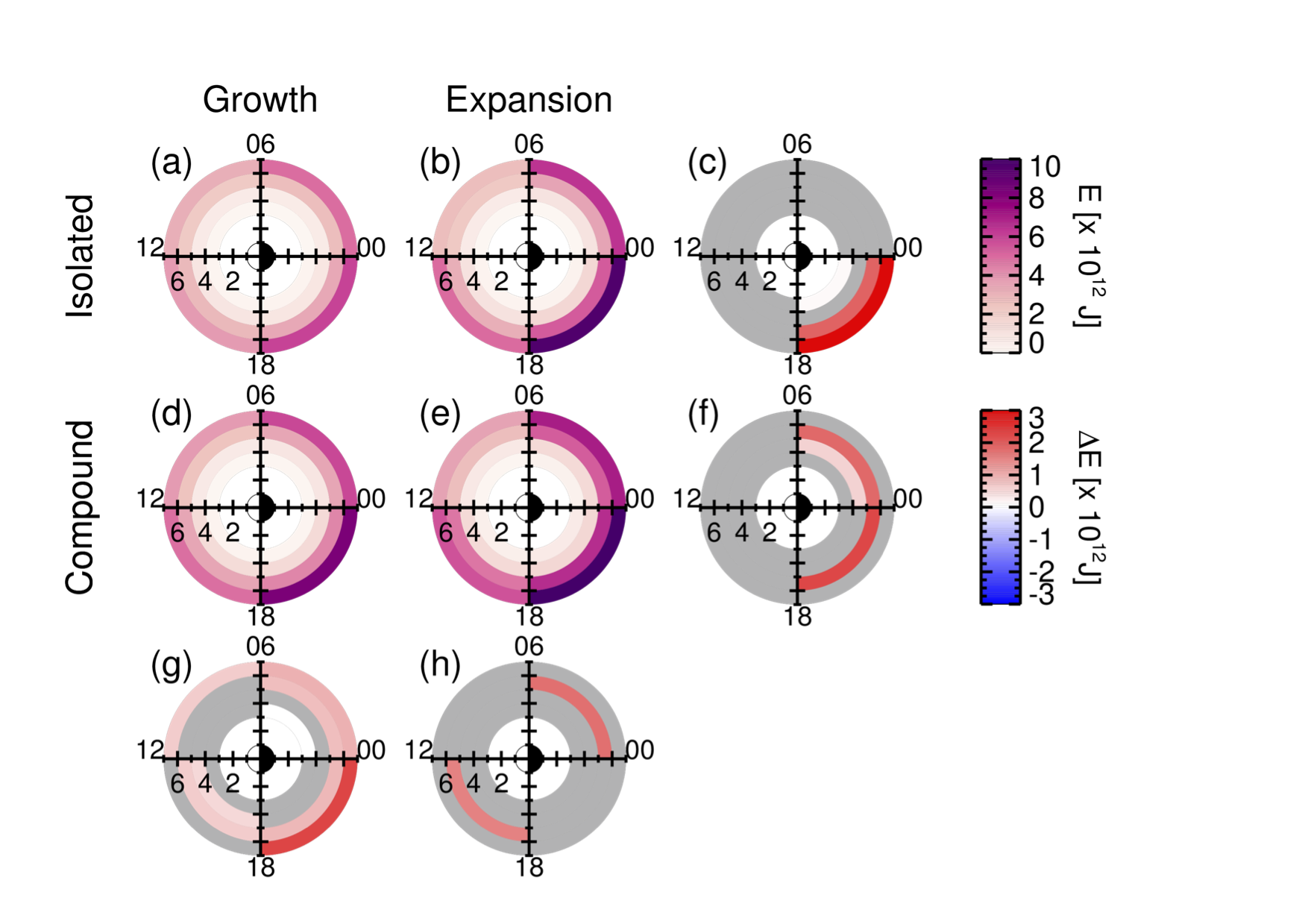MIST
Magnetosphere, Ionosphere and Solar-Terrestrial
How does substorm activity affect the ring current?
by Jasmine Kaur Sandhu (MSSL, UCL)
Earth’s magnetosphere is highly dynamic and due to coupling with the solar wind huge amounts of energy can be stored in the stretched magnetotail. Substorms (impulsive bursts of nightside reconnection) rapidly close large amounts of the tail flux and, through enhanced convection and injection of plasma, substorms can significantly energise the ring current population.
Do substorms with different properties affect the ring current differently?
Substorms can occur as an isolated event (preceded and followed by quiet periods) or as part of a compound event (multiple substorms occurring one directly after the other). A statistical analysis of ion observations from the Van Allen Probes was conducted to identify the similarities and differences in the ring current population during isolated substorms and the first compound substorm in a sequence. Figure a,b,d,e shows L-MLT maps of the median ring current energy content for both isolated and compound substorms, as well as before substorm onset (growth phase) and after substorm onset (expansion phase). Figure c,f shows statistically significant changes following onset and Figure g,h shows the difference in energy content for compound substorms compared to isolated.
Both types of substorms are associated with an enhancement post-onset, where the total enhancement is larger for a compound substorm. We also observed that the ring current energy content is elevated during compound substorms compared to isolated substorms, both before and after onset. Analysis shows that a key driver of these differences is the enhanced and prolonged solar wind driving prior to onset of compound substorms. Plasma is more effectively circulated to the inner magnetosphere and the density of injections are increased.
Overall the work demonstrates the importance of solar wind driving for the substorm – ring current relationship and suggests that compound substorms are able to very effectively energise the ring current to a high degree.
For more information, please see the paper:
Sandhu, J. K., Rae, I. J., Freeman, M. P., Gkioulidou, M., Forsyth, C., Reeves, G. D., et al. (2019). Substorm‐ring current coupling: A comparison of isolated and compound substorms. Journal of Geophysical Research: Space Physics, 124. https://doi.org/10.1029/2019JA026766

Figure: Values for each L‐MLT bin are plotted at the bins' location in the L‐MLT domain for the H+ ions. The mean energy values, E (J), are shown for (a) growth phases of isolated substorms, (b) expansion phases of isolated substorms, (d) growth phases of compound substorms, and (e) expansion phases of isolated substorms. The difference in the mean values, ΔE (J), for the expansion phase relative to the growth phase is shown for (c) isolated substorms and (f) compound substorms. The difference in mean values for the compound substorms relative to the isolated substorms is shown for (g) the growth phase and (h) the expansion phase. It is noted that, for the difference plots (c, f, g, h), the difference in mean values is only plotted if the distributions are identified to be statistically different according to the Kolmogorov‐Smirnov test with p<0.01. MLT = magnetic local time.